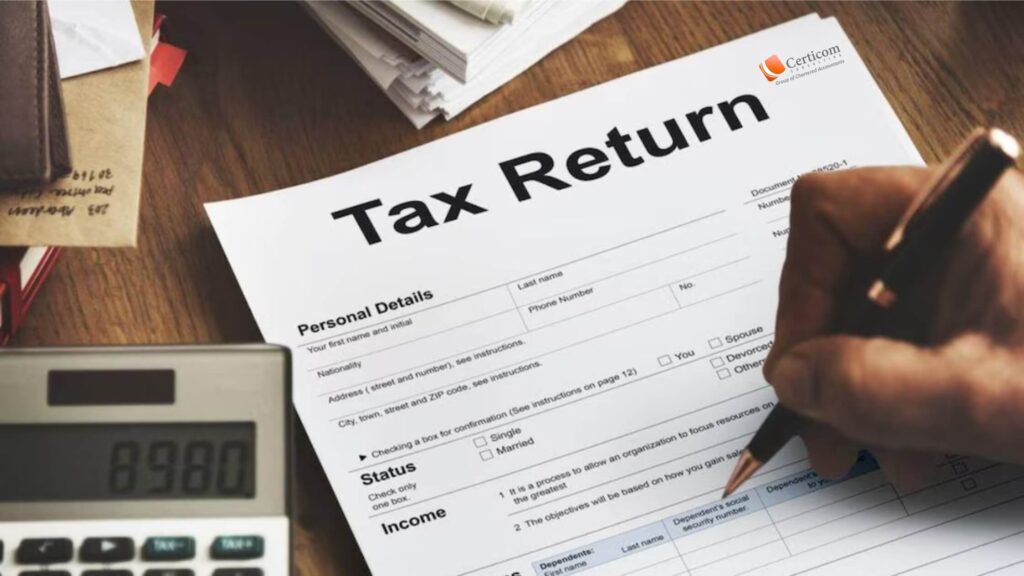Choosing Between ITR 1 and ITR 4 Forms for Income Tax Return Filing: Get Your Doubts Cleared

Filing Income Tax Returns for Assessment Year 2024-25: Choosing the appropriate income tax return (ITR) form is crucial for individuals and businesses as it ensures compliance with tax regulations, reducing the risk of penalties or legal complications. Designed for different taxpayer categories such as individuals, businesses, and organizations, each ITR form gathers essential information on income, deductions, exemptions, and tax liabilities.
Moreover, using the correct form allows taxpayers to take advantage of specific tax benefits and deductions that match their income sources and classification, potentially lowering their tax liability and maximizing savings. Additionally, using the right form ensures streamlined processing by tax authorities, minimizing delays and inquiries, and expediting the issuance of any eligible tax refunds.
Difference between ITR 1 Sahaj and ITR 4 Sugam
The income tax return forms for Assessment Year 2024-25 (pertaining to income earned in 2023-24) have been officially released.
Taxpayers can now initiate the filing of their ITR for the financial year 2023-24 (or assessment year 2024-25) as the income tax department has enabled online submission of ITR-1, ITR-2, and ITR-4. These forms cater to individuals, professionals, and small businesses.

In February 2023, the CBDT introduced certain modifications to the ITR-1 form regarding disclosure under Section 139(1), which is voluntarily filed by individuals with annual taxable income of less than Rs 2.5 lakh. Such individuals will no longer need to declare their fixed deposits exceeding Rs 1 crore in their ITR forms.
ITR-1 and ITR-4 are simplified forms tailored to meet the needs of a wide range of small and medium-sized taxpayers.
ITR-1 Sahaj
The ITR-1 form is applicable for individuals with income up to Rs 50 lakh, deriving earnings from salary, one house property, and other sources like interest. ITR-4, on the other hand, is suitable for individuals, Hindu Undivided Families (HUFs), and firms with total income up to Rs 50 lakh, and earning from business and profession.
ITR-1 can be filed by a resident individual whose:
- Total income does not exceed Rs 50 lakh during the FY
- Income is from salary, one house property, family pension income, agricultural income (up to Rs 5000), and other sources, which include:-Interest from Savings Accounts-Interest from Deposits (Bank / Post Office / Cooperative Society)-Interest from Income Tax Refund-Interest received on Enhanced Compensation
- Any other Interest Income
- Family Pension
- Income of Spouse (other than those covered under Portuguese Civil Code) or Minor is clubbed (only if the source of income is within the specified limits as mentioned above).
Required Documents for Filing ITR-1
To file ITR-1, you will need Form 16, house rent receipt (if applicable), and investment payment receipts (if applicable). It’s important to note that ITRs are annexure-less forms, meaning you do not need to attach any documents (such as proof of investment or TDS certificates) along with your return, whether filed manually or electronically. However, you should retain these documents as they may be required to be produced before tax authorities for assessments or inquiries.
ITR 4 Sugam
ITR 4 is applicable to resident individuals, Hindu Undivided Families (HUFs), and firms (excluding LLPs) with total income up to Rs 50 lakh, deriving income from business and profession calculated under Sections 44AD, 44ADA, or 44AE, along with agricultural income up to Rs 5,000.

ITR-4 can be filed by a Resident Individual / HUF / Firm (other than LLP) who has:
- Income not exceeding Rs 50 Lakh during the FY
- Income from Business and Profession which is computed on a presumptive basis u/s 44AD, 44ADA or 44AE
- Income from Salary/Pension, one House Property, Agricultural Income (up to Rs 5000/-)
- Other sources include (excluding winning from Lottery and Income from Race Horses):-Interest from Savings Account-Interest from Deposit (Bank / Post Office / Cooperative Society)-Interest from Income Tax Refund-Family Pension-Interest received on enhanced compensation-Any other Interest Income (e.g., Interest Income from an unsecured loan)
Prepare the following documents (as applicable) for filing ITR-4:
- Form 16
- Form 26AS and AIS
- Form 16A
- Bank statements
- Housing loan interest certificates
- Donation receipts
- Rental agreement
- Rent receipts
- Investment premium
- payment receipts (LIC, ULIP, etc.)
For further information, taxpayers can refer to the official website of the Income Tax Department at https://www.incometax.gov.in/iec/foportal/help/e-filing-itr4-form-sugam-faq
Related Post
Top 7 Income Tax Errors That Invite IT Notices
Resident’s Guide to Buying NRI Property in India
Book A One To One Consultation Now For FREE
How can we help? *



